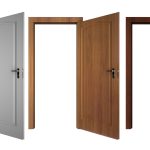In almost all electronic equipment, including computers and laboratory, industrial and processing equipment, keeping the components cool is an important consideration in the life of the electronics. One of the most commonly used cooling options is a tubeaxial fan.
A tubeaxial fan has propeller-shaped blades that are housed within a frame that protects the blades and also allows for installation within a device. With larger industrial sized models, they can actually be mounted in ductwork to allow for continual air flow along the system.
The tubeaxial fan is a self-contained unit with the motor being located within the part itself. It is wired to the motor, sensor, or other connection as required in the specific application. In both electronic as well as larger types of fans, there can be any number of blades to allow for the correct amount of air through the system. With their design, they can be used in computers and other electronics safely and with only minimal space requirements.
The Design
Any tubeaxial fan will have the same design basics. There will be s solid frame around the central motor and blades. Some use a ball bearing system for the rotational component, and others use sleeve bearing or other options. This information should be readily available in the specs for any model.
As mentioned above, different models, brands and designs of fans will have different blade configuration. Typically this is not a critical selection factor, rather the size, voltage and shape are more essential for selection.
Voltage in tubeaxial fan models can range from 115 VAC to 5 VDC with multiple options in between. The fans will come with the lead wires in place, making installation easy. The top lines also are protected against overloading, ensuring they will continue to function even under atypical conditions.
Considerations
Within the specific size and voltage, there are other considerations to keep in mind. In most applications, including computers and small electronics, choosing a design for low noise and vibration will be very important. Most, but not all designs allow for mounting from both faces, but this is something to verify with each model.
Most of the common styles of these fans are either metal, plastic or a combination of both materials. By comparing options and considering the needs for the job you can find the right tubeaxial fan for any project need.







